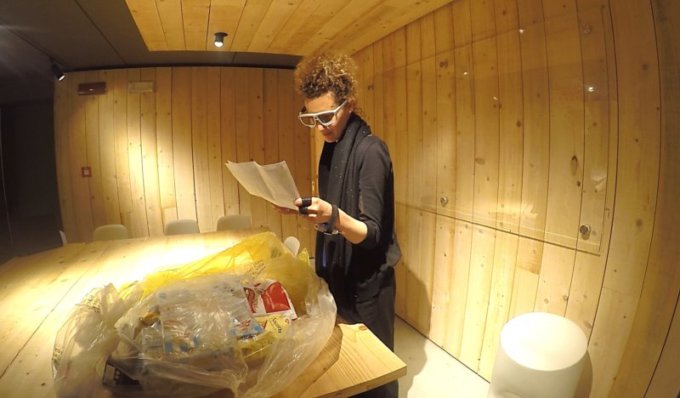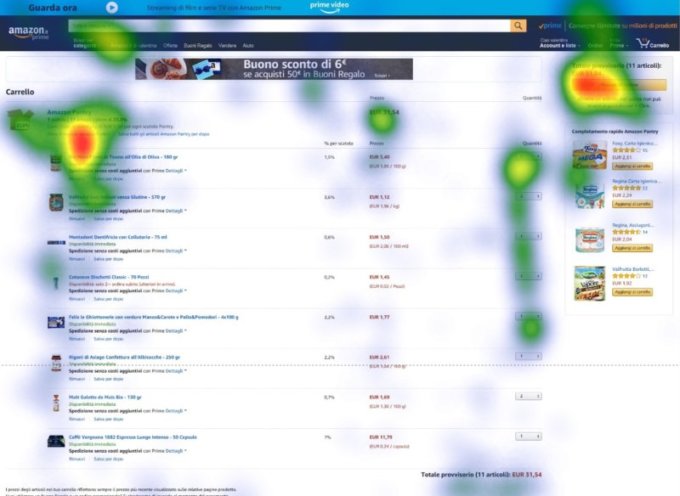You have surely noticed how our smartphones, for some time now, inform us about the times of use of the different applications : they do it for the activities of the day, of the week and of the month. At the top of the rankings we find social networks, browsers for navigation, applications for productivity but also some marketplaces. In my case, Amazon is always present and even exceeds the usage times of dear old text messages and the home banking app.
Every day, in a more or less direct way, there are platforms able to condition our habits and improve the quality of our lives . An intelligent navigator , unlike the one integrated in most of our vehicles, allows us to change course arriving at destination with an alternative route. A taxi called directly from the app , in some cases, prevents us from passing through the ATM, guaranteeing us the reservation. An app that can store all our “loyalty cards” reduces the thickness of our increasingly bulky wallets. A “Prime” service and a return policy so strongly devoted to consumer satisfaction, increase our propensity to purchase exponentially.
In this regard, a few months ago, faced with the launch of one of the most famous online shopping services with home delivery in our city, we asked ourselves about the quality of the experience lived by people: from the purchase through the browser to the unboxing of the “shopping bags”/strong>. We then investigated people’s experiences during browsing and purchasing on some organised large-scale distribution e-commerce solutions, Amazon included.
To read the complete report, you can send a request by filling out the form at the end of this article.
The “mixed” approach as an analysis tool
We did not just observe the people involved in this investigation. We interviewed them, we invited them to comment. We also measured the levels of psychophysiological activation to make inferences about the cognitive load, through a series of metrics that, due to their implicit nature, were able to confirm or deny what had been explained to our fellow researchers.
In fact, all contexts can be potentially analyzed through a “mixed” approach like the one that distinguishes us, able to combine qualitative and quantitative research methodologies.
And it doesn’t matter whether you’re in the hospital, at an airport, driving a vehicle or in front of your smartphone. What we care about is the experience of people , the value it carries and the expectations it inevitably brings.
Usability and fruition experience
We talk about usability as the “ degree in which a product / service can be used / used by particular users to achieve certain objectives with effectiveness, efficiency and satisfaction in a specific context of use “. However, it is only one part of our investigation work. More and more aimed at reconstruction of the “real” relationship between user and company . Among our customers and their end customers. A necessary “reconnection” that can only pass from the care of this relationship and from listening on several levels.
The object of this analysis allowed us to focus on the experience of using online shopping services . But what characterizes a fruition experience? It is characterized as a complex, articulated moment, consisting of several phases:
- Expectation , or anticipation as a set of values, prejudices, opinions about the product, brand or store, based on previous or not previous experiences (as shown by us the IAT test );
- Decision , that is the set of all those micro-moments , relating to the cognitive and emotional spheres, which flow into final decision-making;
- Fruition , moment of fruition of that specific and unrepeatable experience (whatever it is);
- Overall brand perception , which is the final perception that remains to the user and which will influence all future moments of use.
That’s why it is essential to shift our attention to the overall experience of people .Week after week, the experience of using the aforementioned platforms improves and increases the number of organised large-scale distribution brands that face the still very small home delivery shopping market. What does not change, however, is the expectation of users, always more “conditioned” by the most widespread e-commerce interfaces and increasingly used to more efficient aftersales services.
Our study: three online shopping experiences compared
But let’s get to our study: we divided the users into 3 groups of 16 people each. We therefore assigned a specific browsing experience to each group on an Italian organised large-scale distribution e-commerce.
All the interaction was facilitated by our researchers through the Think Aloud technique and monitored with stress bracelet ( ie SHIMMER GSR3 ) and remote eye tracker (ie SMI REDn ), in order to obtain insights respectively about the level of stress experienced and the eye movements on the page.

People’s experiences have been the most varied, as have the usability barriers encountered. Generally we can conclude that the results were not surprising, but what was surprising , even for the same Amazon Pantry (unknown as a service for almost all users), was just the general expectation on Amazon e-commerce .
In this regard, below you will find an insight related to the aggregate eye behavior of users : the most significant fixations (ie yellow / red) revolve precisely around the main actions of the page, without dispersion, everything seems clear and well distributed right away.

The interface of the product “listing”, the packaging, the shipping and the customer service are just some of the elements that contribute to the consolidation of the Amazon platform as a benchmark for this type of e-commerce. Not necessarily the best “designed” interface but certainly the most recognizable and at the same time familiar , able to determine in our minds the navigation “recurring patterns” of navigation which are really difficult to ignore.
Experience of using VS overall experience
This is why it becomes essential to abandon the concept experience of use (in this case of a platform) and start talking about the overall experience of people.
Amazon, with its return services (even accelerated compared to the return of the goods), its efficient customer service and fast delivery times has not only raised the bar: has introduced the concept of serendipity in e-commerce, giving everyone the possibility of making a wrong purchase decision, without paying the consequences.
Starting from these premises, it is therefore easy to understand how the level of stressful activation (or more commonly the stress level) remains low during the whole experiential flow. And it no longer matters at this point how nice the interface design is or the micro-copy of that part of the site is effective. It remains only to wonder where this battle is fought (online or offline?), whether it is still worth it to fight it, or if it is not the time to change your opponent.